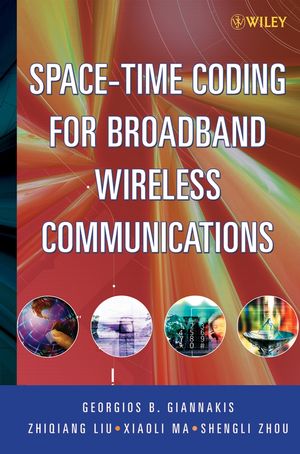Space-Time Coding for Broadband Wireless CommunicationsISBN: 978-0-471-21479-3
Hardcover
488 pages
December 2006
 This is a Print-on-Demand title. It will be printed specifically to fill your order. Please allow an additional 10-15 days delivery time. The book is not returnable.
|
||||||
Preface.
Acronyms.
1. Motivation and Context.
1.1 Evolution of Wireless Communication Systems.
1.2 Wireless Propagation Effects.
1.3 Parameters and Classification of Wireless Channels.
1.3.1 Delay Spread and Coherence Bandwidth.
1.3.2 Doppler Spread and Coherence Time.
1.4 Providing, Enabling and Collecting Diversity.
1.4.1 Diversity Provided by Frequency-Selective Channels.
1.4.2 Diversity Provided by Time-Selective Channels.
1.4.3 Diversity Provided by Multi-Antenna Channels.
1.5 Chapter-by-Chapter Organization.
2. Fundamentals of ST Wireless Communications.
2.1 Generic ST 3.1 Delay Diversity ST TSC ST BBH ST GFK ST 4.3 Full-Diversity Full-Rate ST 6.2 Differential ST Complex-Field ST 10.1 GF-LCF ST Joint GF-LCF ST 10.2 GF-LCF ST GF-LCF ST GF-LCF ST



